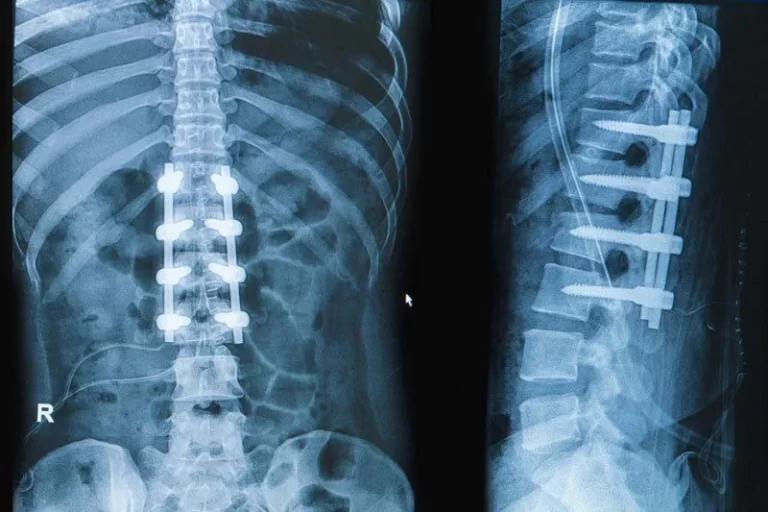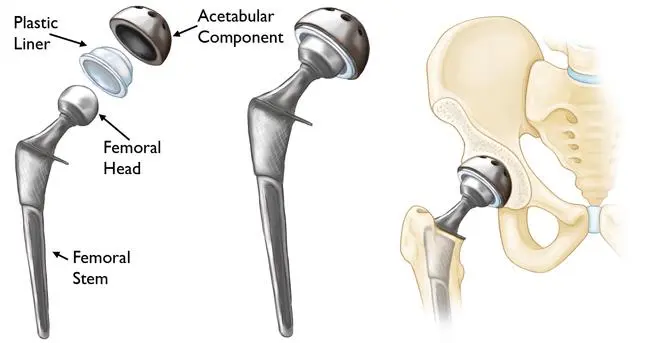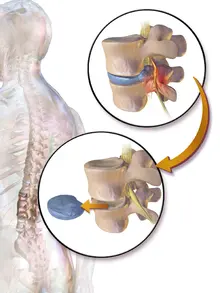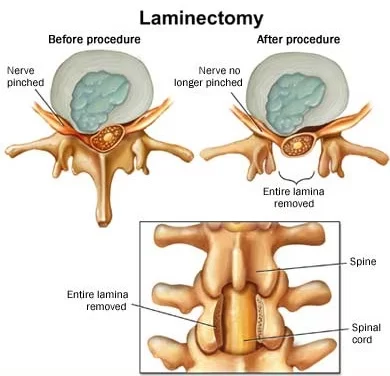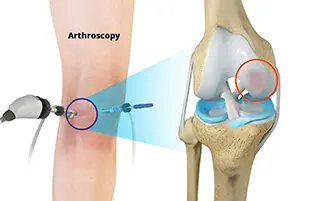Plantar Fascitis Surgery
Table of Contents
Introduction
Plantar fasciitis surgery aims to release tension and alleviate the symptoms of chronic plantar fasciitis that have not responded to other forms of treatment. The surgery typically involves cutting part of the plantar fascia ligament to reduce tension and relieve pain. There are various surgical techniques available, including open surgery and minimally invasive procedures such as endoscopic plantar fasciotomy.
Plantar fasciitis is a common and often painful condition that affects the heel of the foot. It is caused by inflammation of the thick band of tissue (the plantar fascia) that connects the heel bone to the toes. While most cases of plantar fasciitis can be effectively managed with non-surgical treatments such as rest, stretching exercises, orthotics, and physical therapy, some individuals may require surgical intervention when conservative measures fail to provide relief.
- A sharp pain in your heel might make it difficult to stand, walk, or exercise.
- If you have plantar fasciitis and are still experiencing chronic heel pain after months of medication, it may be time to consult a specialist about plantar fasciitis surgery.
- Continue reading to find out what makes a good candidate, what occurs during surgery, and how to recover.
What specifically is Plantar Fasciitis Surgery?
- The plantar fascia is a strong ligament that goes from your toes to your heels and supports your foot’s arch.
- Plantar fasciitis occurs when this ligament becomes swollen and irritated. It’s one of the most common reasons for heel discomfort.
- Plantar fasciotomy is a surgical procedure that detaches your fascia from your heel bone to reduce strain. During the healing process, the connective tissue grows, which might cause your fascia to extend.
Prior to considering surgery, patients typically undergo a comprehensive evaluation to determine the severity of their condition and to explore all available non-surgical options. Plantar fasciitis surgery is usually considered a last resort for individuals who have not found relief from other treatments, as surgery may involve certain risks and a prolonged recovery period. It is important for patients to discuss the potential benefits and risks of surgery with their healthcare provider to make an informed decision.
Fasciectomy or plantar fasciotomy?
- Plantar fasciitis surgery is sometimes known as a fasciotomy or a fasciectomy. So, what’s the distinction between the two?
An “-otomy” typically refers to an incision made without the removal of any tissue. An “-ectomy” is a surgical procedure in which an incision is made and sections of tissue are removed. - An incision is created and your fascia (the connective tissue that surrounds the muscles) is separated from your heel bone for a plantar fasciotomy. An incision is created and any damaged or inflammatory tissue is removed during a plantar fasciectomy.
What is the purpose of plantar fasciitis surgery?
- Surgery is not recommended as a first-line treatment. The majority of people with plantar fasciitis will never require it. However, if you’ve exhausted all other options and still have chronic heel pain, surgery is an option.
- Your doctor may offer less invasive therapy before surgery, such as:
- Orthotic arch supports
- Splints
- Taping your foot
- Physical therapy, including stretching and strengthening exercises
- Icing
- Massage
- Anti-inflammatory medications
- Extracorporeal shock wave therapy, which employs high-energy impulses to restore plantar fascia tissue, and radiofrequency ablation, which employs heat to prevent pain transmission.
According to a 2018 study, 90 percent of patients react to conservative treatment after 12 months.
- If you have chronic pain despite these therapies, you may find it difficult to stand, walk, or participate in sports. Plantar fasciitis can alter the way you walk and move over time, leading to various issues with your feet, legs, hips, and back.
- The surgery’s purpose is to relieve discomfort and increase foot mobility so you may resume your normal activities.
- Overall, the plantar fascia release procedure was a success. In a short 2017 trial, for example, it had a success rate of 70 to 90 percent.
Who can benefit from plantar fasciitis surgery?
- If you meet the following criteria, you may be a good candidate for surgery:
- Despite your efforts, you are still in excruciating pain.
The duration of your symptoms is at least six months.
Physical activity is not possible for you.
Your ability to work is hampered by heel pain.
Other possible diagnoses have been eliminated.
If you have certain underlying health concerns, the risk of side effects, sluggish recovery, or complications after plantar fasciitis surgery may be increased.- Diabetes
- Peripheral neuropathy
- Venous insufficiency
- Your doctor will examine your entire health when determining if you are a good candidate for plantar fasciitis surgery and which type of plantar fasciitis surgery is best for you.
What is the procedure like?
Plantar fasciotomy can be performed in two ways:
- The procedure is open. Typically, a hospital setting is used for this.
- The procedure is known as endoscopic surgery. This operation can be performed in a hospital, surgical facility, or doctor’s office.
- In either case, you will be given pre-op instructions. It is possible that you will be told to avoid eating and drinking 6 to 8 hours before the operation. Follow the directions on whether or not to take your usual meds that morning.
- Just before surgery, your foot will be examined and your vital signs will be taken. An intravenous (IV) line will most likely be put into your arm to administer drugs. Your foot will be wrapped and antiseptically cleaned.
What happens in each sort of operation is as follows:
Open surgery: This is normally done under general anesthesia or with a regional block and sedation. A 1- to 2-inch incision will be made to expose and separate your plantar fascia from your heel bone. At this stage, any trapped nerves or bone spurs can be removed.
Endoscopic surgery: A topical anesthetic and a moderate sedative can be used to accomplish this procedure. Endoscopic surgery comprises two small incisions less than half an inch long under your ankle bone. To release your plantar fascia, the surgeon will introduce a small camera called an endoscope into one of the openings and a tiny knife into the other.
To close the incisions, sutures and bandages will be applied.
- Plantar fasciotomy is usually performed as an outpatient treatment. You will be released once you are fully awake and your vital signs are normal, which should be within a few hours. You won’t be able to drive, so make arrangements for transportation ahead of time.
How long does recovery from plantar fasciitis surgery take?
- You’ll be given post-op instructions tailored to your individual medical needs. Expect mild discomfort or slight pain for a few days.
- The use of painkillers may be suggested by your doctor. If not, take over-the-counter medication as directed.
Open surgery recovery
You may require a walking boot, a cast, or a special shoe for several weeks after open surgery to heal. It is possible that you will need to return to the doctor’s office to have the sutures or cast removed.
Your doctor will tell you when you can resume wearing regular shoes again. A tiny scar will form where the incision was made.
Open surgical recuperation could take 6 to 10 weeks.
Endoscopic surgery recovery
After endoscopic surgery, your foot should be able to bear light weight rather fast. Within 1 or 2 days, you should be able to wear regular shoes again. There will be little scarring.
You’ll probably be advised to take it easy on your foot for a few months. In the interim, your post-surgery recovery may involve flexibility and strengthening exercises, which you can do with or without a physical therapist.
Endoscopic surgery recovery time is normally 3 to 6 weeks. Based on your specific circumstances, your doctor can give you an indication of what to expect.
Follow-up appointments for both open and endoscopic surgery are recommended.
- The shoes you wear are important.
In the future, always wear clothes that give adequate support, especially during vigorous activity. If you are an athlete or have previously participated in high-impact sports, consult your doctor before resuming these activities.
What are the risks and complications of plantar fasciitis surgery?
- While surgery for plantar fasciitis may alleviate symptoms, some patients continue to have discomfort. Plantar fasciitis surgery may have the following risks:
- Adverse reaction to general anesthesia
- Infection
- Slow wound healing
- Damage to or entrapment of a nerve that causes hypoesthesia, or loss of sensation
- Recurring heel pain
- Flattening of your foot’s arch
- Endoscopic surgery is quicker to complete and doesn’t require general anesthesia. Even while some of these dangers still remain, there are often not many issues.
Inform your doctor if you are experiencing increased pain or signs of infection.
Takeaway
- Plantar fasciitis is a painful ailment that affects the plantar fascia, a ligament that runs from your heel to your toes. In most situations, noninvasive treatments can resolve the problem within a few months to a year.
- When all other treatments have failed and your quality of life is suffering as a result of heel pain, you may wish to consider surgery. To relieve tension, the ligament is released. This can be accomplished through either open or endoscopic surgery.
- Plantar fasciitis surgery, also known as fasciotomy, is frequently used to treat chronic heel discomfort. Your doctor can advise you on whether this surgery is a good fit for you.
FAQs
Is surgery a viable treatment option for plantar fasciitis?
You are unlikely to require surgery. Only around 5% of persons suffering from plantar fasciitis do. This means that just 5 persons with plantar fasciitis will require surgery, while the other 95 will not. Before considering surgery, experts recommend that you attempt various treatments for at least 6 months.
How long does recovery from plantar fasciitis surgery take?
Surgery for Plantar Fasciitis
For example, the average recovery time after normal plantar fasciitis release surgery is 6 to 10 weeks for open surgery and 3 to 6 weeks for endoscopic surgery. In the aftermath, you may be prescribed physical therapy to aid in your rehabilitation.
Is it painful to have plantar fascia surgery?
The surgery should be significantly less painful than having plantar fasciitis, and patients should be able to bear weight on their feet 2-3 weeks after the procedure.
What is the best plantar fasciitis surgery?
The most frequent surgical treatment for plantar fasciitis is fasciotomy, which involves releasing the plantar fascia to relieve stress in the foot musculature. This can be done with or without heel spur ectomy. Endoscopic plantar fasciotomy is gaining popularity due to its quicker healing period.
Is it possible for plantar fasciitis to reoccur after surgery?
Another possible complication is persistent discomfort or plantar fasciitis. If a patient experiences prolonged discomfort after a plantar fasciotomy, the physician should investigate other possible causes of the pain. Neuritis or nerve entrapments, particularly Baxter’s nerve, are potential causes of ongoing discomfort.
References:
Pietrangelo, A. (2020, October 26). All about plantar fasciitis surgery: success rates, recovery, and more. Healthline. https://www.healthline.com/health/plantar-fasciitis-surgery


